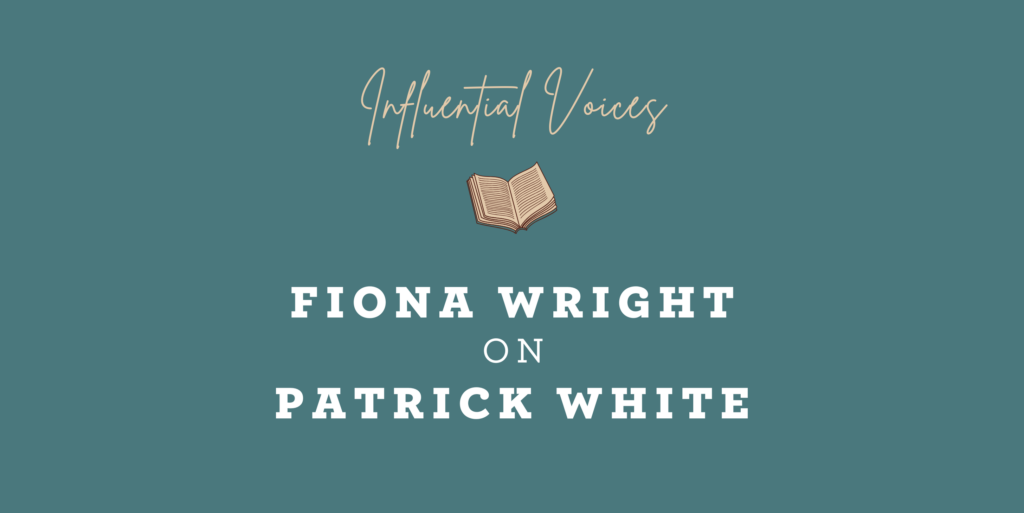
I transpose The Shire of the nineties with The Hills of the sixties every time I read Patrick White, and the fit is snug enough to be frightening. Especially in their misfits. So much of White’s work scathes its way through showy suburban gardens, brutal and brutalised women, congealing roast lunches and empty streets, leaving characters who just don’t fit in trembling and troubled in its wake. The part of me that will always be the weird little kid with the weird big words always has a savage sympathiser in Patrick White, a man as incongruous at his home in Castle Hill as his heroes are in Sarsaparilla, the recurring suburb of many of his stories, and as I always felt in The Shire, that strange ‘insular peninsula’ of middle-class suburbs in Sydney’s south.
It was White himself who coined the phrase ‘the Great Australian emptiness’ for suburbia in his famous essay, ‘the Prodigal Son’, written in 1958 after his return from almost twenty years abroad. It’s an attack on the mediocrity, the conformity, the blandness that breeds in the suburbs, but also a rallying cry to find something beautiful and heartbreaking within it, to fill the emptiness and to uncover, in White’s words, ‘the extraordinary behind the ordinary, the mystery and the poetry which alone could make bearable the lives of such people’.
And it’s this unsettling ambiguity about the suburbs that I admire and relate to most in White’s work. on the one hand, his suburbs are grotesque, places of waste and decay, pettiness and bigotry. They’re places where a housewife will disinfect her telephone, or walk with ‘breasts like concrete chamberpots’; where a family will spend a day drinking beer at the dump, a husband will hunker down with ragged prostitutes, or a mob of workers will string a Jew up in a jacaranda.
But they’re also places where people are fumbling towards something transcendent, towards moments of shared understanding, moments of intense luminosity, or some kind of spiritual or artistic rupture in their lives. It’s here where White’s writing is at its most intense, where ordinary objects drip with sensuality, and morph across colour, textures and light effects. There’s a heartbreaking grace that shines through in fragments, and while it’s most frequently felt by White’s outsider characters, none are exempt from their own unbearable moments of longing, striving and desire.
And I think this complexity captures something that niggles away at all veterans of the suburbs, this combination of disgust and desire – of fear and loathing butting right up against nostalgia and longing – that we can’t reconcile, or ever really come to terms with, even with irony. I know this is something that permeates my own writing. On the one hand, I’m interested in the stories and spaces of my suburbs, and in finding a way of giving them an honour, complexity and dignity that’s often missing, especially in their portrayal in film. And on the other, it’s so much fun to write riffs on tupperware parties, the malapropisms of my grandparents, overheard conversations, the deliciously kitsch and the tacky – everything, in short, that’s pure Kath and Kim territory.
But it’s also something that operates in a larger scale throughout White’s work. All of his characters are always reaching out towards each other, and then pulling back immediately; seeking solace and sensuality, and then shutting down its possibility right away. He creates these intricate set pieces and tableaux, where very little actually happens, but so much is felt, so much is put at stake, and left to vibrate in the furnishings. And wherever dialogue erupts, it is fragmentary, matter-of-fact, and often at complete cross-purposes to what is really going on.
So unsurprisingly it is the outsiders, the artists, the odd fish and the freaks that come closest to finding a way out of the sticky morass. They’re the ones less bound by social convention, less tied to the ideals of others, more sensitive to the flaws in these interactions. And they’re a wild and motley bunch – from the genderbending jackeroo of The Twyborn Affair to Miss Hare, the ugly, redheaded spinster living in a ruined mansion in Riders in the Chariot, and my two favourites, the slightly simple Arthur from The Solid Mandala (who brings a broken doll to his childless neighbour and tries to cure his buttoned-up brother) and the beautifully named Hurtle Duffield from The Vivisector, who rails against the city and ends up incestuously entangled with his sister and her cats.
Even though none of these heroes get off lightly, they’re all driven by a need to create, to shape something from their world and find a way of understanding its complexity. They’re searching, always, for something luminous and magical, something to transcend the squabbling suburbs that they live in. they’re trying to make such lives bearable. Which is something that every weird little wordy kid needs.
About the Writer
Fiona Wright is a Sydney poet and an editor with Giramondo Publishing. She escaped. Many didn’t.
More from Writing NSW
Check out our full range of in-person writing courses in Sydney, our online writing courses and our feedback programs to see how we can help you on your writing journey. Find out about our prizes and opportunities, as well as writing groups across NSW, and sign up to our weekly newsletter for writing events, opportunities and giveaways.
